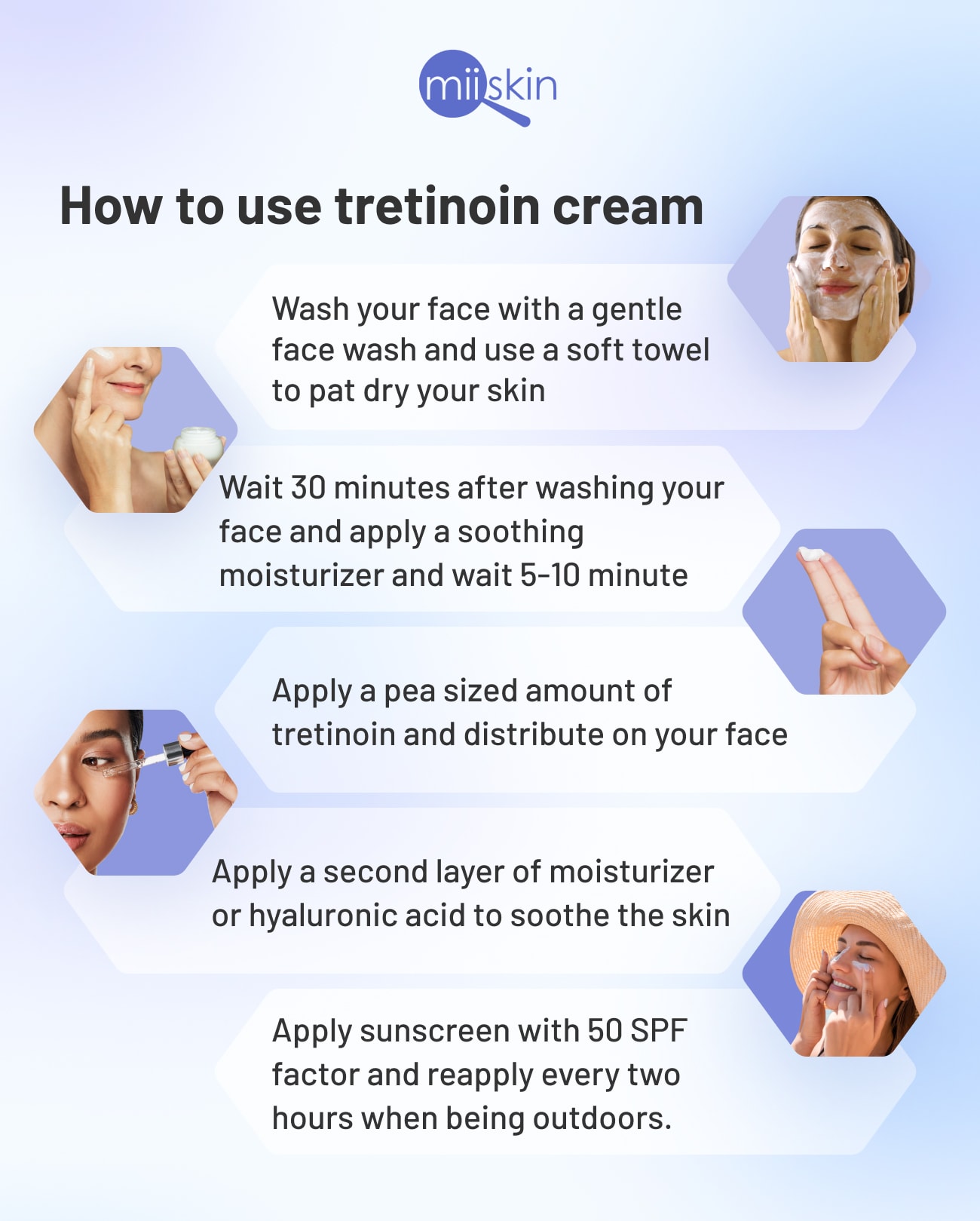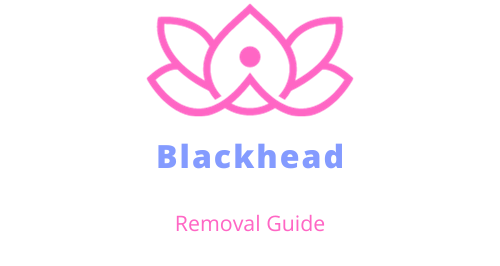To effectively use tretinoin cream for acne, apply a pea-sized amount to clean, dry skin at night. Avoid the eyes, nostrils, and mouth, and use sunscreen during the day.
Tretinoin cream, a derivative of vitamin A, is a powerful tool against acne. Its primary function is to speed up cell turnover, which helps unclog pores and reduce the appearance of acne. Dermatologists often prescribe it as part of an acne treatment regimen.
It’s crucial to start with a low concentration to gauge skin sensitivity and gradually increase as tolerated. Consistent nightly application can lead to significant improvements, but patience is essential, as it may take several weeks to notice the benefits. Always follow the specific instructions provided by your healthcare provider to ensure the best results and minimize potential side effects such as dryness or irritation.
Introduction To Tretinoin Cream
Tretinoin cream emerges as a powerful ally in the fight against acne. This topical medication, derived from Vitamin A, tackles skin woes effectively. With consistent use, it can lead to clearer, more rejuvenated skin. Understanding its role and application is key to achieving the best results.
What Is Tretinoin?
Tretinoin is a retinoid, a class of medications related to Vitamin A. It speeds up cell turnover, which helps to unclog pores and keep skin smooth. Doctors often prescribe tretinoin for acne treatment. It also reduces the appearance of fine lines and discoloration.
Acne Basics: How Tretinoin Helps
Acne occurs when hair follicles become clogged with oil and dead skin cells. Tretinoin works by promoting cell turnover to prevent these blockages. It also reduces inflammation and can lighten acne scars over time. By incorporating tretinoin into a skincare routine, many find significant improvements in their acne.
Benefits Of Tretinoin For Acne
Tretinoin cream, a powerful derivative of Vitamin A, has been a game-changer in acne treatment. Offering a multi-faceted approach to combat acne, tretinoin not only clears up existing blemishes but also works beneath the surface to prevent new ones. Let’s explore the remarkable benefits of incorporating tretinoin into your skincare regimen.
Reduction In Acne Breakouts
Consistent use of tretinoin cream leads to a significant decrease in acne breakouts. By promoting cell turnover, it prevents pores from clogging. This action helps to reduce the formation of both whiteheads and blackheads, resulting in clearer skin over time.
- Unclogs pores: Tretinoin keeps the pores clear of blockages.
- Prevents pimples: With fewer clogged pores, pimple formation slows down.
- Minimizes flare-ups: Regular application reduces the occurrence of acne flare-ups.
Improvements In Skin Texture
Smooth, refined skin texture is another benefit of tretinoin. As it accelerates the cell regeneration process, the skin becomes more even and smooth. Tretinoin also boosts collagen production, which helps in diminishing acne scars and fine lines, revealing a more youthful and radiant complexion.
| Effect of Tretinoin | Benefit to Skin |
|---|---|
| Cell turnover | Reduces roughness, promotes smoothness |
| Collagen production | Improves elasticity, reduces scars |
Preparation For Tretinoin Treatment
Embarking on a tretinoin journey for acne treatment requires thoughtful preparation. This powerful retinoid can revolutionize skin health. Proper steps before starting tretinoin ensure optimal results and minimal discomfort.
Skin Assessment With A Dermatologist
Before tretinoin application, a professional skin assessment is crucial. A dermatologist will evaluate your acne and skin type. This ensures tretinoin is suitable for you. They may suggest specific concentrations or formulations tailored to your needs.
Testing For Skin Sensitivity
Prior to full-scale use, a patch test is advised. Apply a small amount of tretinoin cream to a discreet skin area. Monitor for any adverse reactions over a few days. This helps predict skin’s response to the treatment.
For those starting tretinoin, consider these steps:
- Wash your face gently with a mild cleanser.
- Pat your skin dry and wait 20-30 minutes.
- Apply moisturizer if your skin is prone to dryness.
Remember: Avoid using tretinoin with products containing benzoyl peroxide, salicylic acid, or sulfur. These can cause severe irritation.

Credit: miiskin.com
Proper Application Techniques
Embarking on the journey to clear skin with tretinoin cream requires precision and care. Let’s dive into the best ways to apply this potent acne fighter. Proper application techniques ensure maximum efficacy and minimal irritation.
Cleansing And Drying Your Skin
Before tretinoin touches your skin, it’s crucial to prepare the canvas. Clean skin allows tretinoin to work effectively. Follow these steps:
- Choose a gentle cleanser. Avoid those with exfoliants or alcohol.
- Wash with lukewarm water. Hot water can irritate the skin.
- Pat your skin dry. Do not rub. Use a soft towel.
- Wait 20-30 minutes. This ensures the skin is completely dry. Tretinoin on wet skin increases irritation.
Amount Of Cream To Use
More cream does not equal better results. It’s vital to use the right amount:
- Apply a pea-sized amount. This is enough for the whole face.
- Dab cream on cheeks, forehead, and chin. Avoid the areas around the eyes and mouth, and the nostrils.
- Spread gently. Use your fingertips in a light circular motion.
- Do not apply more. Excessive cream won’t clear acne faster. It may cause more peeling or redness.
Remember: Consistency is key. Apply tretinoin cream as directed by your healthcare provider. Regular application brings out the best in your skin.
Integrating Tretinoin Into Your Skincare Routine
Want to fight acne with tretinoin cream? It’s a powerful tool. But it works best when used right. Here’s how to add tretinoin to your skincare routine.
Best Time To Apply Tretinoin
Night time is the best for tretinoin. This avoids sunlight which can affect tretinoin. Clean your face gently. Pat it dry. Wait for 20-30 minutes. This makes sure your skin is ready. Now, apply a pea-sized amount of tretinoin cream. Use it 2-3 times a week at first. Then, slowly use it more often.
Complementary Skincare Products
Pair tretinoin with the right products.
- Use a gentle cleanser. This helps keep your skin clean without irritation.
- Moisturize your skin. Find a non-comedogenic moisturizer. It hydrates without causing acne.
- Apply sunscreen daily. Tretinoin makes skin sensitive to the sun. Use SPF 30 or higher.
Remember, avoid products with benzoyl peroxide or salicylic acid right after tretinoin. They can be too harsh together.
Managing Side Effects
Tretinoin cream can be a powerful ally against acne. Yet, it may also bring side effects. Proper management is key to continuing treatment while keeping discomfort at bay. This section will guide you through common irritations and when to seek medical advice.
Common Irritations And How To Handle Them
When using tretinoin cream, some users might experience side effects. Below are ways to handle common irritations:
- Redness or Peeling: Use a gentle, non-comedogenic moisturizer to soothe skin.
- Dryness: Decrease application frequency to allow skin to adjust.
- Sensitivity to Sunlight: Apply sunscreen daily and wear protective clothing.
For best results, apply tretinoin cream as directed by your doctor. Start with lower concentrations and increase as needed.
When To Seek Medical Advice
While minor irritations are common, some side effects warrant immediate medical attention. Here’s when to call your doctor:
- Severe Burning: If burning occurs and doesn’t go away, it’s important to check in with your healthcare provider.
- Swelling or Blistering: These might be signs of a more serious reaction.
- Breathing Issues: Though rare, difficulty breathing requires urgent care.
Always follow the guidance of your healthcare professional when using tretinoin cream for acne.
Monitoring Your Progress
Embarking on a journey to clear skin with tretinoin cream requires patience and observation. Tracking changes and effects is key to understanding how your skin responds. It’s not just about the application, but also about watching your skin transform. Let’s explore effective ways to monitor your progress.
Keeping A Skincare Diary
A skincare diary acts as a personal timeline for your treatment journey. Note the date you start using tretinoin, and jot down:
- Daily skincare routines: products and their quantities
- Changes in your skin’s texture and appearance
- Any side effects: redness, peeling, or dryness
Regular entries help you spot patterns and gauge the cream’s effectiveness.
Signs Of Improvement To Look For
Positive changes in your skin can be subtle at first. Pay attention to:
| Timeframe | Signs of Improvement |
|---|---|
| First few weeks | Less inflammation, fewer new breakouts |
| 1-3 months | Acne scars fading, smoother skin texture |
| 3-6 months | Consistent skin clarity, reduced fine lines |
These milestones indicate tretinoin is working for you.

Credit: www.pandiahealth.com
Long-term Use And Maintenance
Mastering the art of tretinoin cream use ensures lasting results in the battle against acne. A well-adjusted routine promotes skin health. Over time, maintenance becomes key to preserving clear skin. Let’s explore how to adjust application frequency and sustain clear skin after acne.
Adjusting Application Frequency
Find your skin’s rhythm with tretinoin cream for the best results. Here’s how:
- Start slow to let your skin adapt.
- Monitor skin’s response and increase gradually.
- Use less cream if irritation occurs.
- Consult a dermatologist to tailor the frequency for your skin.
Remember, the goal is consistent, long-term care rather than quick fixes.
Sustaining Clear Skin After Acne
Once acne clears, maintain your skin’s health with these steps:
- Continue using tretinoin to prevent new breakouts.
- Implement a gentle skincare routine.
- Protect skin with SPF daily.
- Stay hydrated and eat a balanced diet.
Regular check-ins with your dermatologist can help keep your skin on track. Your journey to clear skin is a marathon, not a sprint. Stay committed to your routine for lasting beauty.
Myths And Misconceptions
Tretinoin cream is a popular acne treatment. Yet, many myths cloud its true benefits. Let’s clear the air and focus on what it really offers.
Debunking Common Tretinoin Myths
People often believe things about tretinoin cream that aren’t true. Here’s the truth:
- Myth: Tretinoin works overnight. Truth: It takes weeks to see results.
- Myth: More cream means faster results. Truth: Only a pea-sized amount is needed.
- Myth: Tretinoin causes severe skin damage. Truth: Some irritation is normal, but it’s safe.
- Myth: It’s only for severe acne. Truth: It helps all acne types.
Realistic Expectations From Tretinoin Therapy
Understanding what tretinoin cream can do is key. Here are facts:
- Patience is essential. Improvement takes time.
- Initial breakouts can happen. It’s part of the process.
- Consistent use is crucial. Skipping days won’t help.
- Protection from the sun is necessary. Tretinoin makes skin sensitive to sunlight.

Credit: www.everydayhealth.com
Frequently Asked Questions
Do You Put Tretinoin On Before Or After Moisturizer?
Apply tretinoin to clean skin before moisturizer. Allow it to absorb for 20-30 minutes, then follow with moisturizer.
How Long Does It Take For Tretinoin To Work On Acne?
Tretinoin may start improving acne within 2 to 3 weeks. Full benefits often take 6 to 12 weeks.
How Do You Get The Best Results From Tretinoin Cream?
To optimize tretinoin cream results, start with a pea-sized amount at night. Gradually increase frequency, use sunscreen daily, and moisturize regularly. Consult a dermatologist for personalized advice.
Do You Leave Tretinoin Cream On Overnight?
Yes, you typically apply tretinoin cream before bed and leave it on overnight, allowing it to work effectively as you sleep. Always follow your dermatologist’s specific instructions for use.
Conclusion
Embracing tretinoin cream for acne can be a game-changer for your skin health journey. Begin with a pea-sized amount and stay consistent for the best results. Remember to consult your dermatologist, and don’t forget sunscreen. Clear skin is within reach with the right approach to tretinoin use.
Stay patient and watch your complexion transform.

